This article was originally published in the Wisconsin State Farmer
Nitrate loads to groundwater have increased statewide, with studies estimating that over 10% of private wells in Wisconsin exceed the health standard of 10 mg/L (Wisconsin Groundwater Council 2022). In areas with over 75% agricultural land use, the percentage of private wells exceeding the standard increases to 20%. Elevated nitrate levels in groundwater can have serious human health impacts on infants and pregnant women, and has possible correlation with various cancers and thyroid function in adults.
Nitrate leaching
Nitrate is a plant-available and water soluble form of nitrogen that can move through the soil profile and ultimately into groundwater. Most nitrate leaching in agricultural systems occurs during fallow periods, when no living roots take up nitrate from the soil. After annual crop harvest and in the spring before crop planting, soil is often warm enough for microbes to produce nitrate by breaking down soil organic matter, crop residue, manure, or leftover fertility. When a rainfall or snowmelt event occurs, infiltrating water removes nitrate from the root zone. For example, one study with a corn, soybean, wheat rotation measured 80% of the nitrate lost to groundwater during a 3 year rotation occurred during the corn stage, mainly after corn harvest and before soybean planting (Syswerda et al., 2012).
This high risk time period of the winter and spring limits the effectiveness of in-season practices like nitrogen timing, rate and placement. One proposed solution in annual cropping systems is to integrate cover crops. Cover crops have historically been recognized for their soil erosion control but can have an impact on nitrate leaching too. However, not all cover crop species have been shown to decrease nitrate leaching. Farmers and agronomists should consider nitrogen uptake, water dynamics, and timing when deciding on a species or mixture to plant to minimize nitrate leaching.
Cover crop species selection
Overwintering cover crops have the greatest potential to reduce nitrogen leaching. Cereal small grains like rye, triticale, or wheat maximize the amount of water taken up and transpired by the crop, and have the maximum potential for accumulating nitrogen in biomass. Wisconsin has limited growing degree days after conventional crop rotations, and these species are able to actively take up water and nitrogen when the potential risk for leaching is the highest.
Many farmers note that fields with cover crops are plantable earlier than fields without cover crops in wet spring weather. Through transpiration, cover crops evaporate water from the plant and soil surface. This transpiration process, more so than using the water to store as biomass, reduces the amount of water and nitrate moving through the soil and past the root zone. Choose a fibrous root cover crop that overwinters for maximum nitrate leaching reduction, as preferential flow channels can be created by other varieties like brassicas (Figure 1).
Cover crop biomass is related to nitrate leaching reduction, as cover crops store nitrogen in an organic form in their biomass which decreases the amount of soluble nitrate in the soil (Thapa et al., 2018). Biomass accumulation is related to planting date and species selection. A winterkilled cover crop like radish or oats, has a limited growing window to accumulate biomass in the fall, is not actively taking up nitrate in the spring and can even actively release nitrogen as it decomposes after frost. Adding winter wheat or an alternative forage into a rotation leaves adequate time for cover crop establishment, but choosing a corn silage or soybean hybrid with an earlier maturity may have a big impact on the cover crops’ potential groundwater quality benefits.
Not all over-wintering cover crops have equal impact on nitrate leaching. Legumes have a symbiotic relationship with bacteria that allows them to fix nitrogen from the air, bringing additional nitrogen into an agricultural system. A review of the scientific literature comparing nitrate leaching in plots with cover crops and without cover crops, showed that non-legume cover crop species are significantly more effective in reducing nitrate leaching compared to legumes (Figure 2; Thapa et al., 2018). Mixtures of species have a wide range of results, and may be key to reducing nitrate leaching while minimizing the yield impact on the following crop.
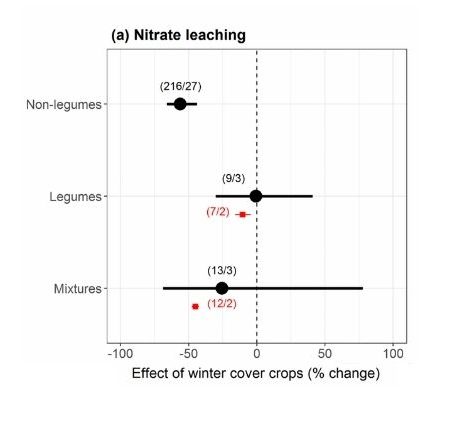
Producers use cover crops for a variety of reasons in their farm operation, from weed management to erosion control and even to help minimize nitrate leaching. Complex biogeochemical cycles like the nitrogen cycle rarely have any silver bullet solutions, cover crops included. Cover crops can have a big impact on nitrate leaching in annual cropping systems, but communities should prioritize planting cereal grains, as early as possible and allow for long periods of growth in the spring before termination to make a substantial impact.
References
Syswerda, S. P., Basso, B., Hamilton, S. K., Tausig, J. B., & Robertson, G. P. (2012). Long-term nitrate loss along an agricultural intensity gradient in the Upper Midwest USA. Agriculture, Ecosystems & Environment, 149, 10-19.
Thapa, R., Mirsky, S. B., & Tully, K. L. (2018). Cover crops reduce nitrate leaching in agroecosystems: A global meta‐analysis. Journal of environmental quality, 47(6), 1400-1411.

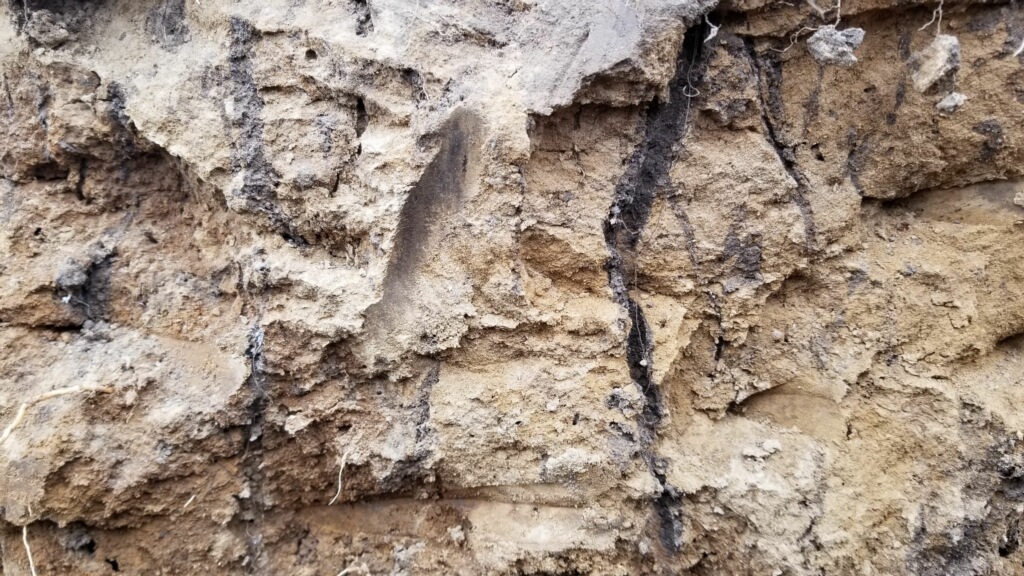
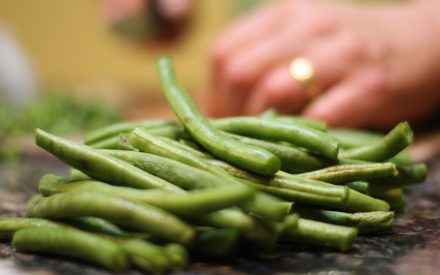 Field Notes Episode 8: Ag, Water, and Processing Vegetables
Field Notes Episode 8: Ag, Water, and Processing Vegetables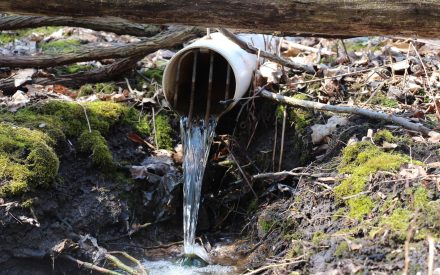 A cost-effective approach for on-farm tile monitoring
A cost-effective approach for on-farm tile monitoring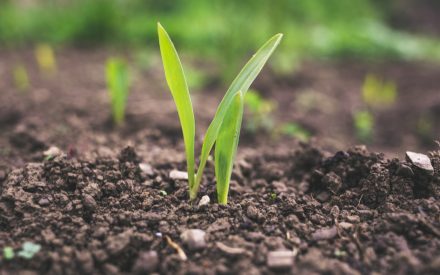 ▶ Watch: Soil health practices impact on phosphorus pools and availability
▶ Watch: Soil health practices impact on phosphorus pools and availability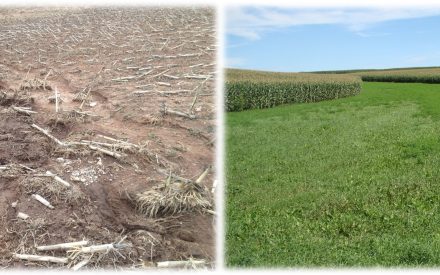 Addressing Phosphorus water quality issues: Where we’ve been, where we’re going
Addressing Phosphorus water quality issues: Where we’ve been, where we’re going


